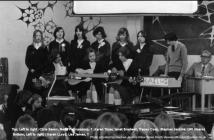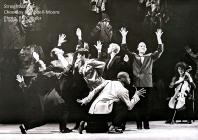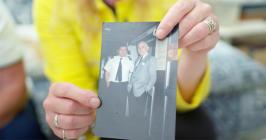Content can be downloaded for non-commercial purposes, such as for personal use or in educational resources.
For commercial purposes please contact the copyright holder directly.
Read more about the The Creative Archive Licence.
Description
National hunt horse racing first came to Ely on 30th May 1855, surviving right up to the Second World War. Ely soon became one of the most important venues in Wales attracting large crowds and first class racehorses. Ely Racecourse owed its beginnings to the Cardiff Race club made up of sporting landowners like the Homfrays, Lindsays and Copes. In those late Victorian days, trains from all over Wales and England brought spectators, trainers, horses and jockeys to Ely Station in great numbers.
Some recollections of Ely Racecourse were captured by Brian Lee in his book ‘the History of Cardiff Racecourse’.
Mr Bob Sparkes of Sully remembers standing on Ely Bridge watching the horses arrive by train. “It was a most colourful sight to see the horses being led out of the carriages to the racecourse stables at the back of Mill Road. The atmosphere was electric, just like a carnival or funfare’.
For many people, Ely Racecourse was more than just a place to win money or see great horses and jockeys in action – it was a kind of open-air club, a great gathering where you met your friends and an exciting part of growing up. The late Mr G Holland recalled that race days meant more pocket money – “After the racing a gang of us boys would descend on the track and collect all the empty beer bottles and take them back for the deposit money which was very welcome in those days”.
In 1895 the first Welsh Grand National was run at Ely. The large crowd broke down the entrance and the police had a job preventing people getting in for free. The winner was T. Cannon’s ‘Deerstalker’ in what was reputedly a very exciting race.
Improvements were made to the course in 1897 and again in 1910 and after the Great War in 1921 including the building of the Grandstand with its director’s box, members lounge and refreshment rooms. Unfortunately a great fire in 1937 reduced the main stands, including the Grandstand, to smouldering ruins in less than an hour. Despite the fire, temporary wooden stands were erected and racing continued. But really, this was the beginning of the end – on April 27th 1939, Grasshopper, ridden by Lestor Piggott’s father Keith, won the last event of the final race meeting before Ely Racecourse closed its gates forever.






Do you have information to add to this item? Please leave a comment
Comments (0)
You must be logged in to leave a comment